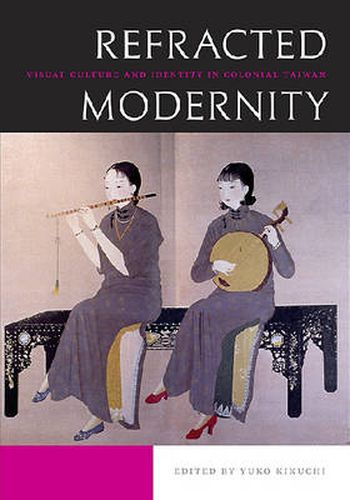Readings Newsletter
Become a Readings Member to make your shopping experience even easier.
Sign in or sign up for free!
You’re not far away from qualifying for FREE standard shipping within Australia
You’ve qualified for FREE standard shipping within Australia
The cart is loading…






Since the mid-1990s Taiwanese artists have been responsible for shaping much of the international contemporary art scene, yet studies on modern Taiwanese art published outside of Taiwan are scarce. The nine essays collected here present different perspectives on Taiwanese visual culture and landscape during the Japanese colonial period (1895-1945), focusing variously on travel writings, Western and Japanese/Oriental-style paintings, architecture, aboriginal material culture, and crafts. Issues addressed include the imagined Taiwan and the
discovery
of the Taiwanese landscape, which developed into the imperial ideology of nangoku (southern country); the problematic idea of
local color,
which was imposed by Japanese, and its relation to the
nativism
that was embraced by Taiwanese; the gendered modernity exemplified in the representation of Chinese/Taiwanese women; and the development of Taiwanese artifacts and crafts from colonial to postcolonial times, from their discovery, estheticization, and industrialization to their commodification by both the colonizers and the colonized.
$9.00 standard shipping within Australia
FREE standard shipping within Australia for orders over $100.00
Express & International shipping calculated at checkout
Since the mid-1990s Taiwanese artists have been responsible for shaping much of the international contemporary art scene, yet studies on modern Taiwanese art published outside of Taiwan are scarce. The nine essays collected here present different perspectives on Taiwanese visual culture and landscape during the Japanese colonial period (1895-1945), focusing variously on travel writings, Western and Japanese/Oriental-style paintings, architecture, aboriginal material culture, and crafts. Issues addressed include the imagined Taiwan and the
discovery
of the Taiwanese landscape, which developed into the imperial ideology of nangoku (southern country); the problematic idea of
local color,
which was imposed by Japanese, and its relation to the
nativism
that was embraced by Taiwanese; the gendered modernity exemplified in the representation of Chinese/Taiwanese women; and the development of Taiwanese artifacts and crafts from colonial to postcolonial times, from their discovery, estheticization, and industrialization to their commodification by both the colonizers and the colonized.